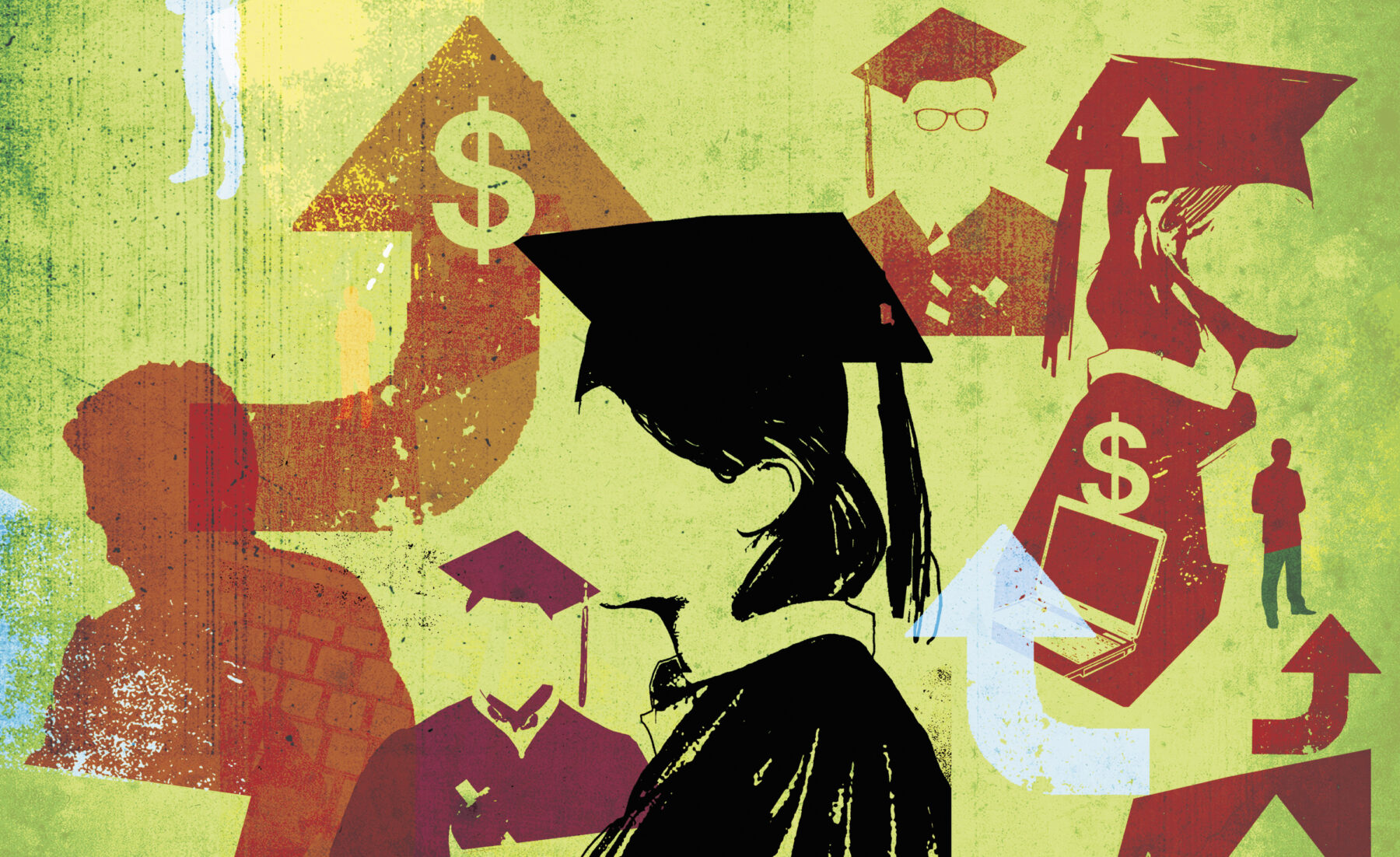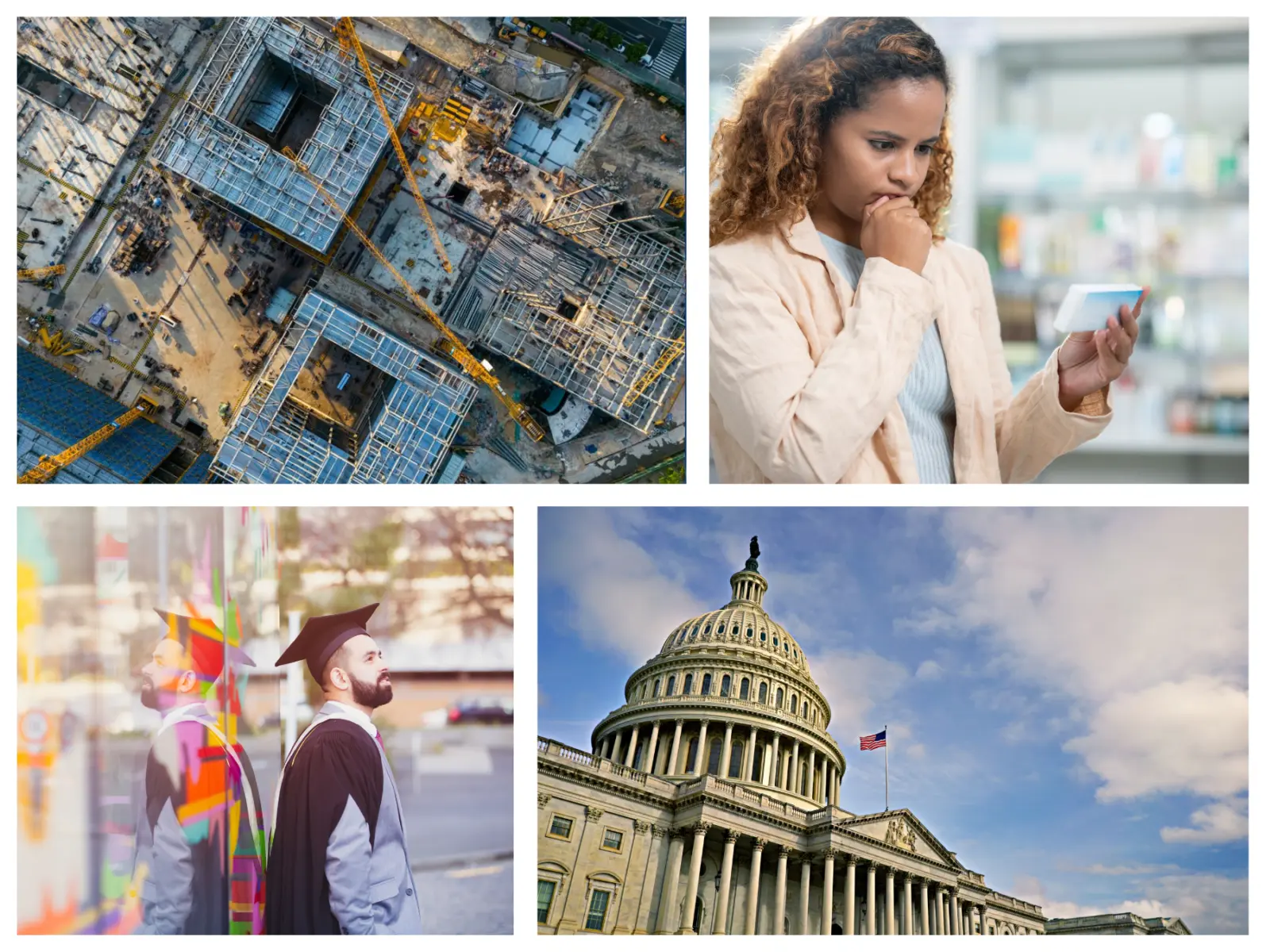In November, President-elect Joe Biden voiced support for legislation proposed by House Democrats that would forgive $10,000 in student loan debt to all borrowers as part of a COVID-19 relief bill. Many progressives celebrated this announcement. Others wished to go further still, advocating for a policy of universal student debt cancellation that would relieve debt for all student borrowers in the United States, totaling $1.7 trillion.
But an increasing number of advocates who have long studied and supported higher education reform say universal student debt relief is the wrong move. They point out that while debt cancellation sounds like a winning strategy, the details matter: In truth, the approach would send billions of dollars to aid mostly upper-income Americans, who hold a disproportionate amount of the country’s student loan debt and are in a drastically different financial situation than hard-pressed low-income borrowers. Instead of blanket relief, these advocates favor more carefully targeted policies that would relieve debt for those struggling the most — again, often lower-income borrowers and borrowers of color.
Kelly McManus, Director of Higher Education at Arnold Ventures, said that policymakers should concentrate their debt-cancellation efforts on helping borrowers who need relief without granting a windfall to those who are not struggling. “Even if we gave $10,000 to every single borrower, that is still going to subsidize a significant number of people who are well-off financially and not do very much to help the people who are hurting the most,” she said.
Many legal and policy experts agree the federal priority should be to cancel debt for students who have been defrauded by predatory for-profit schools and found themselves with an incomplete or worthless degree, instead of enacting broad-based student debt forgiveness. “Universal loan forgiveness is just incredibly regressive,” said Tamara Hiler, Director of Education at the policy think tank Third Way. “It’s not where the federal government should put that kind of money.”
Experts like Hiler are working on litigation and advocacy to secure stronger federal borrower protections and refunds for the most vulnerable students, who disproportionately come from disadvantaged communities of color. They argue this is a better use of limited federal resources and political will.
Unequal Debt
Analysis from the Urban Institute shows that households in the top quartile of earnings hold 34 percent of all education debt, while those in the lowest income quartile hold just 12 percent. This means that student debt is concentrated among a small proportion of Americans, many of whom hold graduate degrees and have the resources to pay down their student loans. When we talk about universal debt cancellation, we’re talking about a plan that would benefit upper-income Americans disproportionately.
But for those with low earnings, even a relatively small amount of education debt can be debilitating. Fully 60 percent of borrowers who default on their loans owe less than $10,000. And an increasing amount of borrowing, delinquency, and default takes place among student borrowers of color.
“People of color often have to get more advanced degrees in order to be considered for the same jobs as their white peers,” explained Hiler. “We also know that there are systemic wage gaps for people of color that make it more difficult for them to pay off that debt over time.”
Low-income students of color are more likely to be victims of disreputable for-profit institutions. The worst of these programs use aggressive lead generators to misrepresent the quality of the education they offer, fail to meet basic accreditation standards, and provide degrees that lead to jobs with earnings too low for borrowers to repay their loans.
Together, these systemic injustices work to disadvantage borrowers of color — something the federal government once vowed to help combat.
Yet federal rules and regulations designed to protect students against these abuses have been largely rolled back in recent years. In particular, the borrower defense rule, which allows students to seek discharge for federal loans made to dishonest institutions, has gone largely unenforced by the Department of Education under Betsy DeVos, leaving over 80,000 borrower defense claims pending.
At the same time, the government has made a practice of garnishing federal benefits from borrowers in order to collect on delinquent loans. “Some parts of law, like taking people’s Earned Income Tax Credits and Social Security payments, shock the conscience,” said Toby Merrill, Founder and Director of the Project on Predatory Student Lending at Harvard Law School, an organization that represents low-income borrowers against for-profit schools and the Department of Education.
Universal loan forgiveness is just incredibly regressive. It’s not where the federal government should put that kind of money.Tamara Hiler Director of Education at Third Way
Advocates for more targeted student debt relief say that the Biden administration and federal lawmakers could have the most impact by taking measures to hold predatory schools accountable and make defrauded students whole.
In Defense of Borrowers
Legal organizations that pursue targeted debt relief emphasize the importance of protecting students who have suffered the worst abuses of the higher education system. “With any sort of debt cancellation it’s really important to keep equity in mind,” said Aaron Ament, President and Co-Founder of the National Student Legal Defense Network, a nonprofit that uses litigation and advocacy to address predatory education practices.
Student Defense accomplishes that, in part, through targeted class-action lawsuits. The organization won cases against the Art Institutes — a chain of schools notorious for failing to disclose to students its loss of accreditation status — on behalf of a class of students they defrauded. It has won over $300 million dollars in loan discharge against the Department of Education over continuing to collect federal loan debts from tens of thousands of students defrauded by schools like ITT Technical Institute and Corinthian Colleges.

“One of the key things for us is being strategic in how we bring the litigation and how we tailor advocacy around it,” said Ament. Often, he explained, his organization can win not just debt relief but broad injunctions against schools to prevent further abuses.
The Project on Predatory Student Lending has also won important victories for student borrowers through litigation and published research on using borrower defense to deliver student debt relief. “Under any contract of existing law, where people have been cheated by their schools, their debts are not enforceable,” said Merrill. Recently, the organization won a ruling in Massachusetts against the Department of Education that will cancel the student loans of all 7,200 former Corinthian Colleges students — the first time a federal court ordered a borrower defense discharge of federal student loans. It has also supported high-profile actions in California and Florida.
“We have been pushing the Department of Education to understand, in a way that it clearly has not, that everyone who attended Corinthian and ITT has been cheated and must be made whole,” said Merrill.
A Policy of Forgiveness
Other efforts aim to change policy directly, cancelling debts more broadly for all student borrowers who have been taken advantage of. “The proposals we have put forward are targeted at providing relief for those who are the most disadvantaged and coming from predatory for-profit schools,” said Ament. “It is no secret that they often target Black and Latino communities.”
Student Defense is advancing a slate of policies that would discharge loans for permanently disabled borrowers, restore automatic relief for students whose colleges close, reinvigorate enforcement against predatory colleges, hold college owners and executives personally liable for their schools’ conduct, and better use the Department of Education’s accountability authorities. Each proposal has support in the Senate and from state attorneys general, and research from Data for Progress shows they have strong public support among voters.
Third Way has also offered several proposals that would serve the most vulnerable student borrowers without enacting broad-based debt forgiveness. “The more targeted we can make debt cancellation, the better,” said Hiler.
The organization recommends that the Biden administration take administrative action to overturn Betsy DeVos’s defanged borrower defense rule and provide immediate relief to defrauded students. That move alone would address over $800 million in debt that is currently awaiting adjudication, including for many borrowers of color, student veterans, and people who did not complete a degree. It is likely to have bipartisan support in the Senate.
‘Pay Down, Upskill’
Another proactive recommendation is what Third Way calls “pay down, upskill.” Envisioned as part of a COVID-19 relief package, this policy would take the form of a $5,000 credit for post-secondary education for all eligible American adults. The credit could go toward either paying down existing debt or enrolling in high-quality training to upskill for the future job market.
Hiler said that, by including the nearly 80 percent of Americans who do not currently carry student loan debt, this would be a more equitable measure than broad-based debt cancellation. “They can choose to either pay down student loan debt, if they have it, or they can apply it to future post-secondary needs,” she explained. Third Way is currently working with members of Congress to introduce the proposal as bill language.
For those who have long sought debt cancellation for victims of misconduct in higher education, the Biden presidency offers new hope. “I think there’s a lot that can be done quickly,” said Ament. “We are optimistic that a new team will come in and be a lot more receptive to these ideas.”
Rapid action is especially important for student borrowers as the country grapples with the economic impacts of COVID-19. Many expect college enrollment to boom, as it did following the Great Recession. “We’re going to be pouring billions of dollars into the higher education system through additional stimulus relief packages,” said Hiler.
Those billions should be spent not on a one-time bailout that helps many who are already well-off, she continued, but on long-term improvements that won’t be regressive, will hold bad actors accountable, and will do the most to address systemic racism in higher education. “Thinking wholesale about accountability, oversight, and consumer protection rules, the administration can come in and prioritize making sure that other predatory colleges don’t take advantage of students.”











